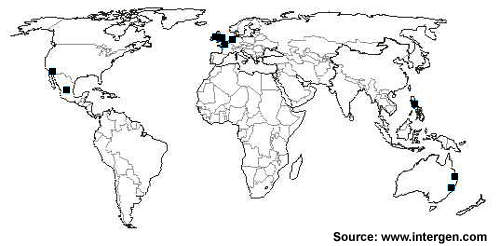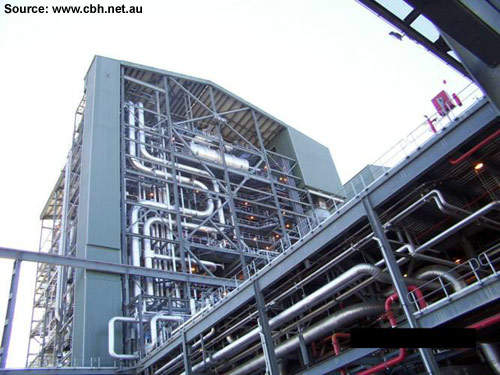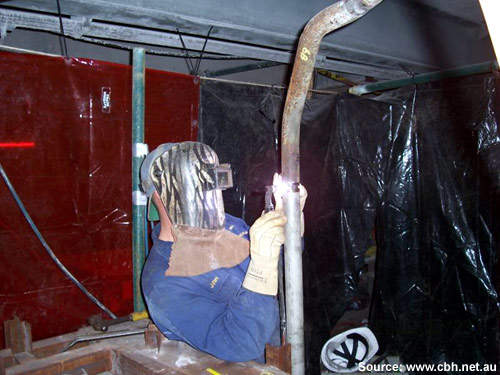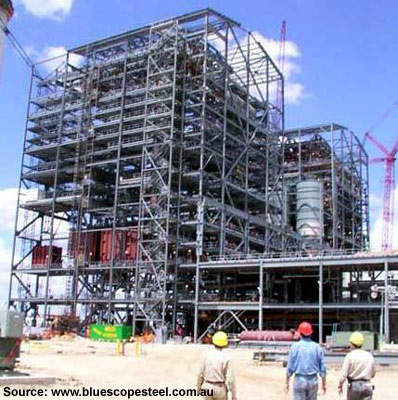Millmerran Power is a two-unit 850MW-generating power station near Millmerran in South West Queensland. One of the most energy efficient coal-fired projects in Australia, the power station uses a supercritical boiler, with low nitrogen-oxide burners that cut NOx emissions by 50 to 70%. Commissioned in 2002, Millmerran cost AUS $1.5bn and is owned and operated by InterGen.
The station supplies base-load power and came on line early in 2003. It supplies enough electricity to power approximately 1.1 million homes. Millmerran Power sells all its electricity into the National Electricity Market (NEM), and in recent years has been achieving capacity factors of more than 85%. The power station won the Banksia Environmental Award 2006 in the water category. Coal comes from the adjacent open-cut Commodore mine.
Largest merchant non-recourse greenfield plant
InterGen completed the debt financing in August 1999. Financing was arranged by ABN AMRO, ANZ Investment Bank, BankAmerica, Commonwealth Bank of Australia, and the National Australia Bank. BOS International, KBC Bank, Overseas Union Bank, Bayerische Hypo-und Vereinsbank and Royal Bank of Scotland are also reported to have committed funds.
Bechtel Power constructed the project under a lumpsum turnkey contract. At the time, Millmerran was the largest fully merchant greenfield plant to be financed on a non-recourse basis. Electricity demand had been growing at 3% annually and without an additional power station would have overtaken the available supply by 2002.
Construction created around 1,200 jobs. BlueScope Steel provided structural and cladding. The Millmerran Operating Company now employs 50 people directly and 150 people indirectly, including coal mine employees and other subcontractors. CBH performs unit outage work maintenance. The plant has operated more than five years with no Lost Time Injuries.
In April 2005, InterGen shareholders Shell Generating and Bechtel Enterprises Energy announced their decision to sell InterGen NV and ten of its power plants to a partnership between AIG Highstar Capital and Ontario Teachers’ Pension Plan. The purchase was completed in August 2005, for US $1.75bn.
Supercritical once-through boiler
Millmerran uses a supercritical once-through boiler, so produces lower greenhouse gas emissions than conventional coal-fired types. It operates at temperatures around 540ºC and pressures of 24 Mega Pascal. These high temperatures and pressures can accelerate corrosion of the boiler tubes. The Oxygenated Treatment (oxygen injection) process control uses an advanced proportional integral and derivative controller (A-PID) that regulates the operation of the servo control valve.
There were initially some stability problems during load changes because of a large (up to 15 minute) dead time, mainly the time between which oxygen gas was injected and the dissolved oxygen was detected in the feed water. In a University of Southern Queensland project, the dead time was reduced by simply moving the injection point nearer the oxygen sensor, so giving fast and stable control response. That helped maintain the protective oxide layer, so reducing the chance
of oxide exfoliation, which can lead to boiler tube failures and power plant shut down.
Air cooling reduces water consumption
Millmerran burns 3.6 million tons of coal a year. It uses air cooling to condense the steam from the turbine exhaust, and so consumes 90% less water than conventional coal fired-power projects. Waste water from Wetalla Sewage Treatment Plant at Toowoomba is used as production water, so no surface water or groundwater resources are used. All run-off water is contained on site and is re-used, ensuring no sediment enters local waterways.
All waste ash from the combustion process is deposited back in the mine to avoid the need for an environmentally hazardous ash store dam. A program to plant trees around the 9,000 hectare site will help link wildlife corridors on the project land as well as protect a rare grass species. Millmerran’s Environmental Monitoring Program assesses any impacts on water, air, soil, flora, and fauna. The power station performs monthly monitoring of surface water, sediment,
dust quality, weather and climatic conditions, noise levels, emissions screening, and agricultural impacts.
Only a small portion of the 9,115 hectares occupied by Millmerran is used for the power station and mine infrastructure. The remainder is a large buffer zone between the project and its neighbors.








